Results
-
 £53.50
£53.50The Mansions of the Lord (from We Were Soldiers)
From the motion picture We Were Soldiers and featured during the Ronald Reagan memorial service in Washington, D.C., this beautiful hymn is presented in an easy and moving setting.
Estimated dispatch 7-14 working days
-
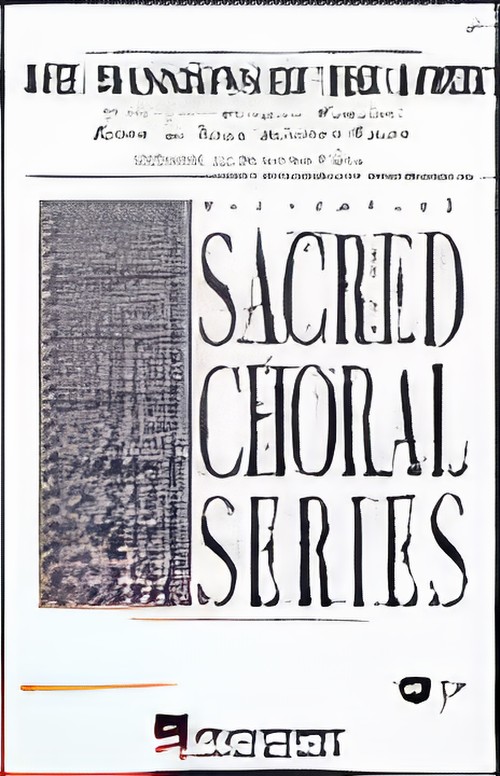 £2.10
£2.10The Mansions of the Lord (2 Part Choral Octavo) - Glennie-Smith & Wallace - Harlan, Benjamin
Originally on the soundtrack from the motion picture We Were Soldiers and performed at Ronald Reagan's funeral, this moving tribute to the members of the Armed Forces is once again relevant. To fallen soldiers, let us sing,/ Where no rockets fly or bullets wing,/ Our broken brothers let us bring/To the Mansions of the Lord.
Estimated dispatch 7-14 working days
-
 £2.10
£2.10The Mansions of the Lord (SAB Choral Octavo) - Glennie-Smith & Wallace - Harlan, Benjamin
Originally on the soundtrack from the motion picture We Were Soldiers and performed at Ronald Reagan's funeral, this moving tribute to the members of the Armed Forces is once again relevant. To fallen soldiers, let us sing,/ Where no rockets fly or bullets wing,/ Our broken brothers let us bring/To the Mansions of the Lord.
Estimated dispatch 7-14 working days
-
 £2.25
£2.25The Mansions of the Lord (SATB Choral Octavo) - Glennie-Smith & Wallace - Harlan, Benjamin
Originally on the soundtrack from the motion picture We Were Soldiers and performed at Ronald Reagan's funeral, this moving tribute to the members of the Armed Forces is once again relevant. To fallen soldiers, let us sing,/ Where no rockets fly or bullets wing,/ Our broken brothers let us bring/To the Mansions of the Lord.
Estimated dispatch 7-14 working days
-
 £2.10
£2.10The Mansions of the Lord (TTBB Choral Octavo) - Glennie-Smith & Wallace - Harlan, Benjamin
Originally on the soundtrack from the motion picture We Were Soldiers and performed at Ronald Reagan's funeral, this moving tribute to the members of the Armed Forces is once again relevant. To fallen soldiers, let us sing,/ Where no rockets fly or bullets wing,/ Our broken brothers let us bring/To the Mansions of the Lord.
Estimated dispatch 7-14 working days
-
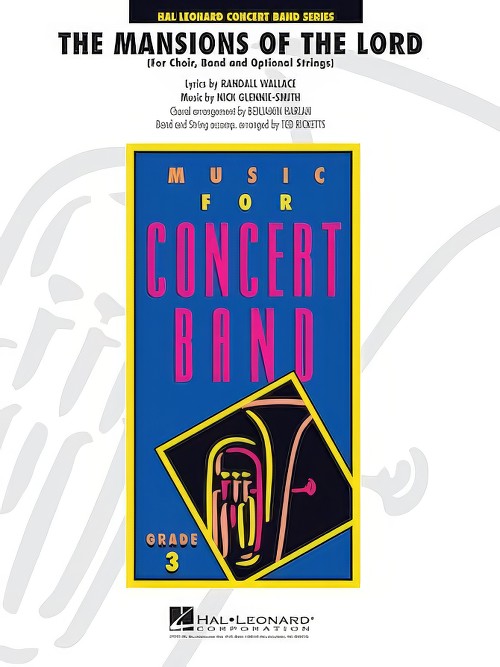 £57.50
£57.50The Mansions of the Lord (Concert Band - Score and Parts) - Glennie-Smith & Wallace - Ricketts, Ted
Here is the moving anthem from the movie We Were Soldiers as performed during Ronald Reagan's funeral service. Combine this with choir and strings for a truly impressive and powerful production.
Estimated dispatch 7-14 working days
-
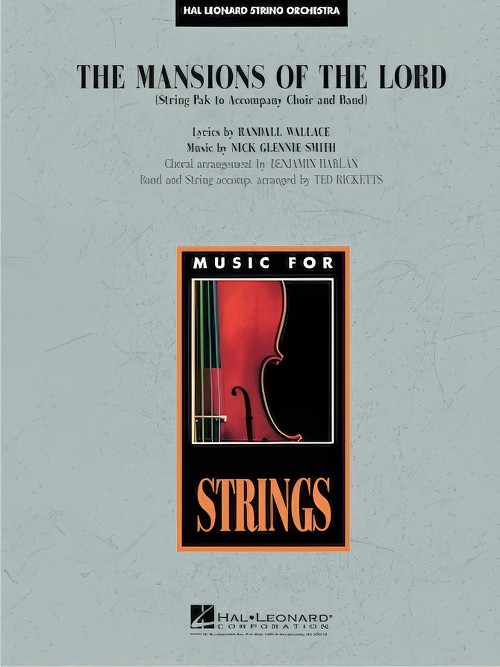 £32.50
£32.50The Mansions of the Lord (String Pak - Score and Parts) - Glennie-Smith & Wallace - Ricketts, Ted
Here is the moving anthem from the movie We Were Soldiers as performed during Ronald Reagan's funeral service. Combine this with choir and concert band for a truly impressive and powerful production.
Estimated dispatch 7-14 working days
-
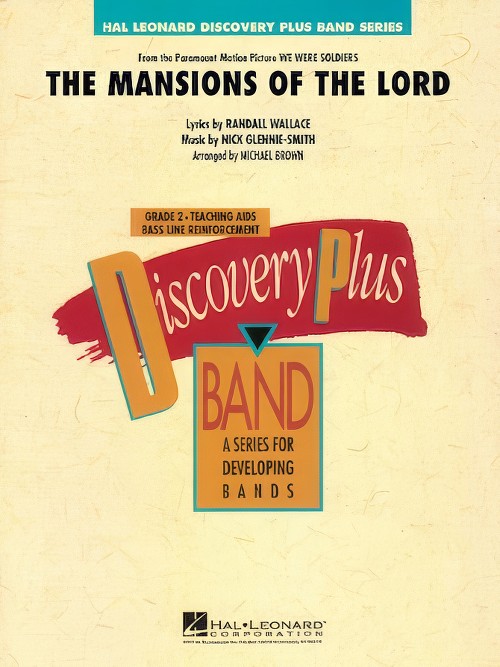 £53.50
£53.50The Mansions of the Lord (Concert Band - Score and Parts) - Glennie-Smith & Wallace - Brown, Michael
From the motion picture We Were Soldiers and featured during the Ronald Reagan memorial service in Washington, D.C., this beautiful hymn is presented in an easy and moving setting.
Estimated dispatch 7-14 working days
-
 £113.30
£113.30Moderate Dances - Angelo Sormani
This piece is a tribute to dance music, especially passionate, intense and meditative dance music. "Moderate Dances" is divided into three movements: a "Tango", a "Slow Waltz" and a "Bossa Nova". Each movement and each dance has its own particular characteristics but, when combined, these different rhythmic beats and times give the piece a feeling of completeness and uniformity. The Tango started to flourish in the suburbs of Buenos Aires in around 1880. There is still some doubt as to its origins, which may be Cuban (Habanera) but are probably African. It was most popular in Argentina and Brazil: here the male protagonist was originally the "gaucho" with his inseparable guitar, later to be replaced by the proud, elegant "compadre". By around 1910 the Tango had spread to Italy and France. New clubs opened, where the upper classes could watch and dance the Tango. Here the dance also underwent some rapid transformations. The exaggerated and extravagant gestures and body movements disappeared. Slow, gliding steps replaced the old rotational movements. The women's red ankle-boots and the partners "staring into each other's eyes" accentuated the erotic nature and sensuality of this dance. So much so that, in 1913, the German government banned soldiers from dancing the Tango. Those who broke the law were immediately discharged from the army. From a strictly musical perspective, the basic instruments were a flute, a harp (the diatonic harp typically played by the Indians of Paraguay) and a violin, or flute, guitar and violin or even clarinet, guitar and violin. These instruments were easy to transport, ideal for playing at parties, in the streets and in courtyards. The musicians played by ear, frequently improvising: there were no scores, no records, which is the main reason why it is impossible to trace the Tango back to its exact origins. However, the Tango's evolution (and growing popularity) was once again fostered by its fundamental ability to absorb "other" cultures, languages and sounds. And it was the arrival of the "bandoneon" (an accordion-like instrument that was invented in Germany and brought to Rio de la Plata by some immigrant), which replaced the flute, that marked the beginning of the Tango's huge success outside Argentina. A number of talented composers, above all the great Astor Piazzola (1921-1992), transformed the bandoneon from a simple accompanying instrument to a solo instrument that was to become the distinguishing feature of the 20th century Tango. The Slow Waltz originated from the Waltz, the typical dance of the Bavarian and Tyrolese peasants in the 1700s. It was composers like Johann Strauss, father and son, who carried the Waltz to its zenith in the 1800s, creating the sensual and melancholy yet joyful and charming dance we are all familiar with. When the Waltz first became popular in Germany, the members of respectable society were shocked at the closeness of the dancing partners, who had always previously danced apart. The main difference between the Waltz and Slow Waltz is that the latter has a slower, more expressive rhythm: the men wear tails and the women wear ball gowns decorated with beads and feathers and couples dance in graceful rotational movements. "Bossa Nova" is the title of the last movement in the piece. Jobim, the great Brazilian musician, described this musical genre as a combination of modern Jazz and Samba. Bossa Nova means "new wave". This was the name of the artistic and musical movement that evolved in Brazil in the late Fifties and was extremely popular throughout the Sixties. The songs are usually about love or social matters, drawing inspiration from the slums of Rio De Janeiro and the lives of their inhabitants. Bossa Nova, with its original compositions and the artistic talent of its musicians, also became hugely popular in the United States and Europe, and top Jazz musicians (Ella Fitzgerald, Stan Getz, Bob Cooper, Charlie Bird, Sonny Rollins, Dexter Gordon, Dizzy Gillespie) started to include Bossa in their repertoires.
Estimated dispatch 7-14 working days
-
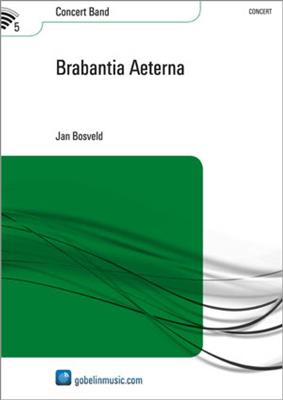 £244.99
£244.99Brabantia Aeterna - Jan Bosveld
In 2006 Brabant will be celebrating it's 900th anniversary. On May 13th 1106 the count Van Leuven was appointed duke of Brabant. This was the birth of the duchy of Brabant. For centuries this duchy, situated in the heart of the Netherlands, was the primary of the seventeen provinces in the Lowlands. Brabant formed with it's capital cities Brussels, Leuven, Antwerp and 's-Hertogenbosch the focal point for politics, culture and economy. The revolution against Spain (1566-1648) caused a fracture between the North and South. The old duchy was divided into a Dutch and Belgian part. Even though each had their own historical background, the bond forged in the past was partially keptalive. To this day we still have a duke of Brabant. Brabantia Aeterna takes you on a musical journey through 900 years of Brabant history. A fascinating journey portraying war and peace, love and grief, prosperity and adversity, development and deterioration. Listen to how monks chanted, bells tolled and churches were built. Or take the thirteenth and fourteenth centuries with their bustling markets, builders of cities or the bleating of countless sheep across the heather. The plague, tribulations, soldiers and political bickering in the following centuries. Hear how the industrialisation of the nineteenth and twentieth centuries provided prosperity for the region and how to this day the following saying still applies: 'the road to Brabant leads to a warmer world' Brabantia Aeterna was commissioned by the Brabantse Bond van Muziekverenigingen (Brabant Music Society) in honour of its fifth anniversary.
Estimated dispatch 7-14 working days
